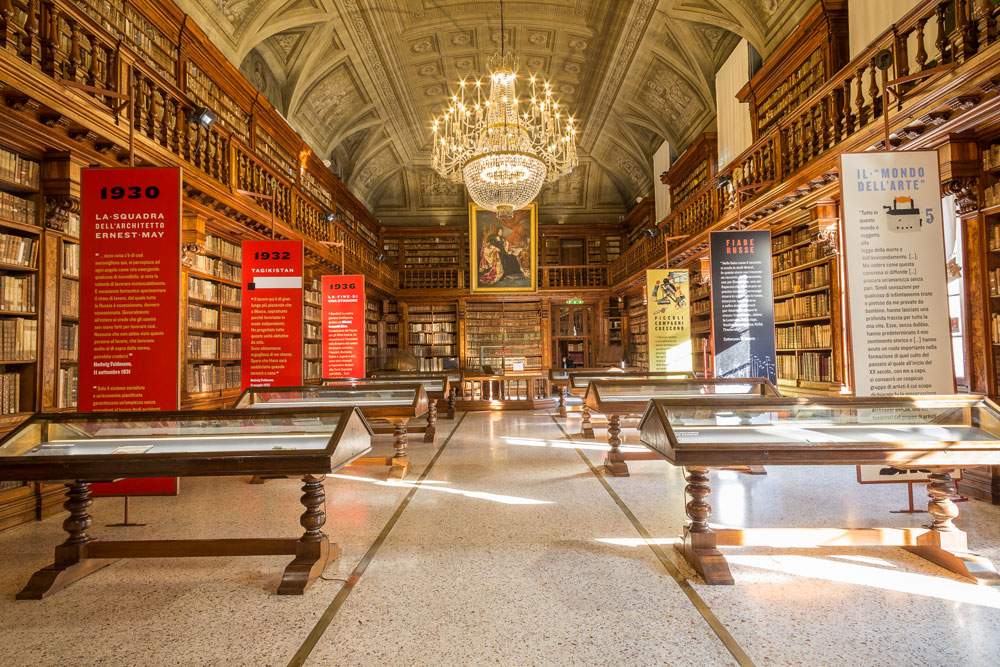Adler collection of Soviet children's books on display at Braidense Library
From January 21 to March 20, 2021, the Braidense Library presents the exhibition Terrible Times-Beautiful Books, with the intention of celebrating artist ’s books and the importance of childhood as witnessed by the Soviet children’s books from the Adler collection that the Library acquired through a donation. Curated by Federica Rossi, the exhibition brings together 140 works (123 from the Adler collection and 17 children’s books from private collections, as well as terracottas and other artifacts that contextualize the historical period.
The exhibition thus focuses on childhood, children, artists and books. “Then, in the turbulent years following the Russian Revolution and the ensuing civil war, as now, we must look to artists and children to guide us through the uncertainties we face every day,” commented Brera Art Gallery and Braidense Library director James Bradburne. The International Center for Children recently opened in the halls of the Braidense Library.
Among the artifacts will be twenty-four precious Soviet brooches from the Sandretti collection of the 1920s-30s, some brightly colored Vyatsk terracottas, Russian folk toys that inspired great masters of the Russian Avant-Garde.
Between the 1920s and the first half of the 1930s, children’s books were the protagonists of an extraordinary creative season in the Soviet Union. These volumes were created by artists who had assimilated the lessons of the art of the Avant-Garde and applied them to the creation of the children’s book. Although in those years the covers were mostly made of relatively light paper and the editions were inexpensive, the vibrancy of the colors, compositional choices, studied geometries and imaginative use of calligraphic characters were capable of creating lively works capable of instilling great joy, giving confidence in the future and stimulating children’s imaginations.
The story of the Adler collection is worth telling: architects Hans Edward and Hedwig Adler had fled to England from Nazi Germany in 1939, leaving many of their possessions to Hedwig’s mother in Cologne. When Hedwig died in 1986, her daughter Susan, clearing out her apartment, found a suitcase in the attic that contained 257 Soviet children’s books, including 169 in Russian, 85 in Ukrainian and 3 in Yiddish, mostly published between the late 1920s and 1933. The collection constitutes one of the few, perhaps the only one, of its kind in Italy, collecting volumes published in a narrow chronological span (1922-1933), giving an interesting insight into the publishing landscape of the time.
Rare editions are also counted, as well as editions by masters such as Vladimir Lebedev, referred to by contemporaries as the “king of children’s books.” There are also the works of Vera Ermolaeva, who succeeded Marc Chagall as director of the Vitebsk Folk Art School, the great center of elaboration of the Avant-Garde; books by Aleksandr Dejneka, among the greatest Soviet artists, who knew how to range from children’s books to the monumental art of the famous mosaics that decorate the ceiling of the Majakovskaya station of the Moscow Metro. Also featured are the Boicukists, or artists from the school of Michailo Boicuk, including Maria Kotljarevskaya and Oleksandr Dovgal, and volumes of the great children’s classics, such as Kipling and Tolstoy, in Soviet editions by leading illustrators of the period, such as Vladimir Favorsky and David Šterenberg.
Valuable editions from private collections include volumes by Ivan Bylibyn, Samuil Maršak, and Petrov Vodkin; the latter will also be inspired by the art of Piero della Francesca. Two editions of What is Good, What is Bad? by the famous poet Vladimir Majakovsky will be on display.
For subscribers, the exhibition will be viewable on the BreraPlus+ platform. A never-before-seen interactive reportage and extra content will allow visitors to explore a selection of thirty books from the Adler collection and delve into the political and cultural context with digital storytelling tools.
Pictured is the set-up of the exhibition Tempi Terribili - beautiful books in the Braidense Library.
 |
| Adler collection of Soviet children's books on display at Braidense Library |
Warning: the translation into English of the original Italian article was created using automatic tools. We undertake to review all articles, but we do not guarantee the total absence of inaccuracies in the translation due to the program. You can find the original by clicking on the ITA button. If you find any mistake,please contact us.




























